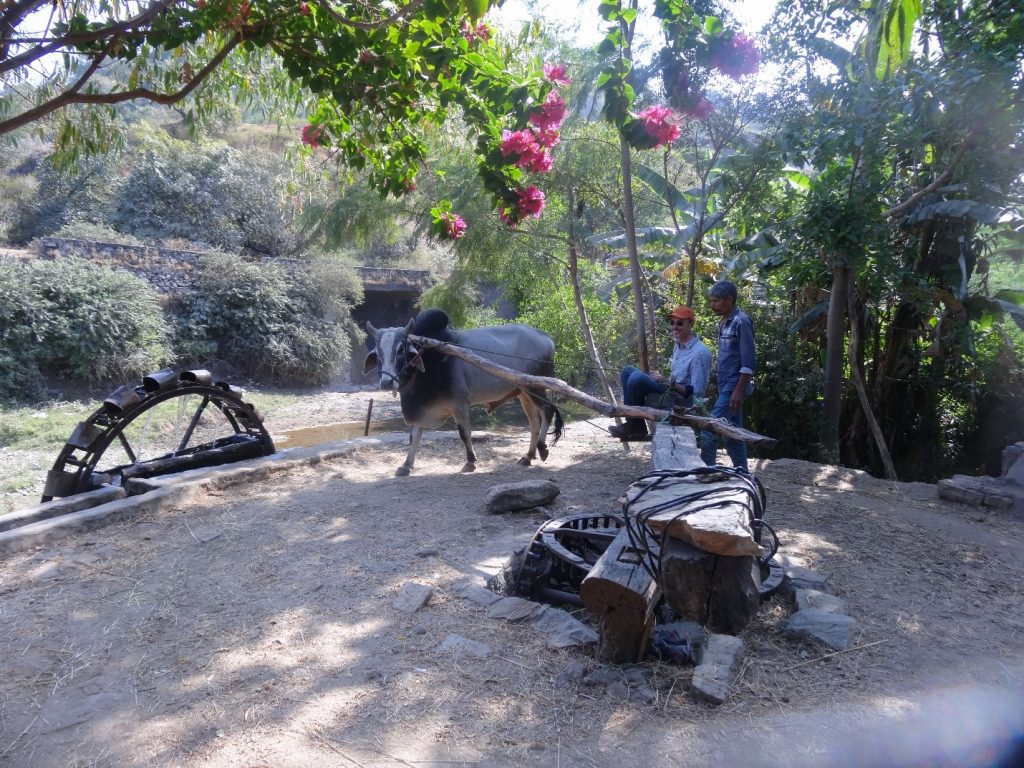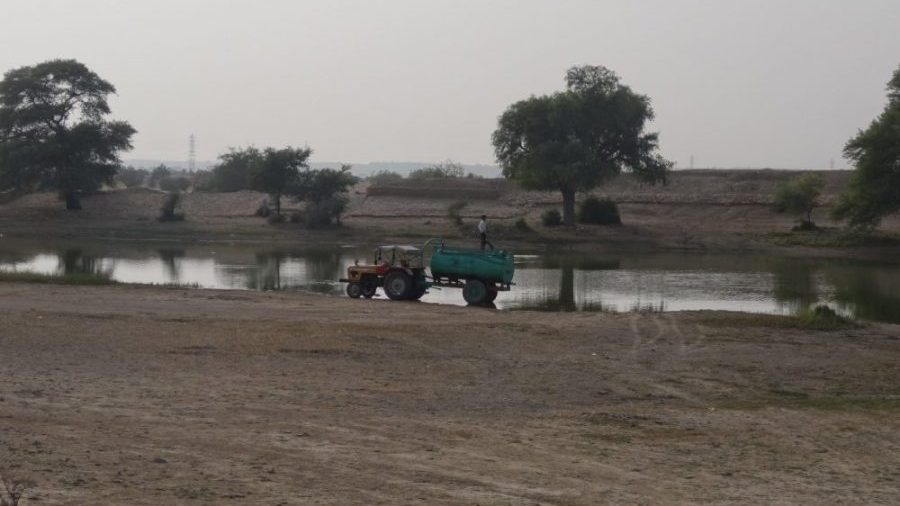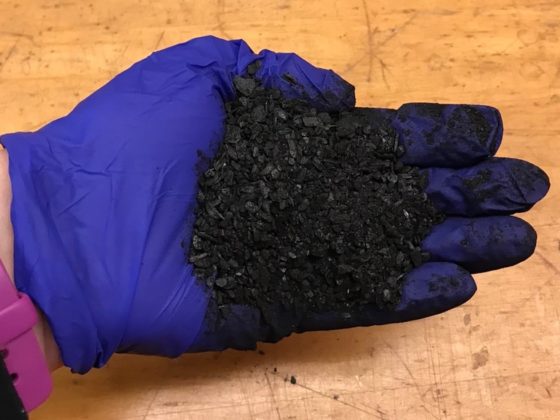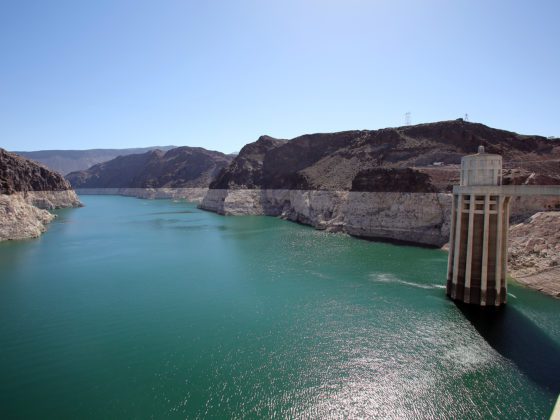Is there enough water to feed humanity? In recent years there have been new concerns about water scarcity and its expected impacts on humankind’s ability to meet its increasing food needs. Because water is also crucial to energy production and power generation, competition for water may emerge between the food and energy sectors. The fear that water limitations may constrain global food and energy security has stimulated some of my recent research on the water-food-energy nexus to identify possible options to increase agricultural production and meet energy needs through a sustainable use of water resources, while reducing per capita consumption. A more optimal distribution of crops could allow for major water savings while substantially increasing food production.
Water consumption by human societies accounts for roughly 10% of the renewable freshwater resources of the planet. However, despite this apparently low globally averaged use, more than 1/3 of all water sources on the planet are being utilized to near-exhaustion, while 3/4 of all irrigated farming areas are highly vulnerable to water scarcity (Bruman et al., 2016). Most of this water (~85%) is locally consumed by agriculture (Figure 1), which by far exceeds industrial and municipal uses. Population growth, changes in diets, and the increasing reliance on biofuels and non-conventional fossil fuels (e.g., from oil sands and shale deposits) are expected to continue to increase humankind’s pressure on the global freshwater resources.
Despite the emergence of new technology (e.g., new crop varieties, irrigation methods, and water harvesting and reuse techniques (Figure 2)), the human pressure on freshwater bodies has been increasing at alarming rates as a result of population growth and changes in diet, rising new concerns about the planet’s ability to feed humanity with its limited water resources (Falkenmark and Rockstrom, 2006; Hoekstra and Chapagain, 2008; Carr et al., 2013; Suweis et al., 2013). An often-overlooked aspect of the water crisis is the emergent competition for water resources by the food and energy industries, which as we show in Rosa et al., (2017; and 2018) is expected to dominate the water security debate in the next few decades. In fact, while until recently most of the fossil fuels used to meet the energy needs of modern industrial societies have relied on conventional oil and gas deposits that can be extracted using relatively small amounts of water — compared to the water cost of power generation — the near future will see an increasing use of unconventional fossil fuels (e.g., shale oil and shale gas as well as bitumen from oil sands and tar sands) that require greater water quantities (Rosa et al., 2017), possibly leading to the emergence or intensification of water stress, especially in arid, semiarid, or highly populated regions. Moreover, we also find that bioenergy policies have stimulated the production of biofuels, leading to a direct competition between food and energy uses of agricultural products and embodied water (Rulli et al., 2016).
Water competition by the food and energy sectors constitutes the core of an emerging debate on the food-energy-water nexus: the growing societal needs for food and energy rely on the same pool of limited freshwater resources, a situation that is generating new concerns on the environmental, ethical, economics and policy implications of the allocation of water resources. Crucial to this debate is the understanding of the ongoing trends in water demand for food and energy production, the evaluation of new approaches to save water and increase water use efficiency, and the comparative analysis of such measures with respect to their feasibility and efficacy.
The hydrological impacts of unconventional fossil fuel extraction have just started to be investigated. Research on oil sands has highlighted the high water cost of the extraction of bitumen from sediments (Rosa et al., 2017). The major oil sand and heavy oil deposits in the world are in regions not affected by severe droughts (e.g., Alberta-Canada, Venezuela, Madagascar, R. of Congo) except for the USA, where water limitations could limit the development of oil sand deposits in Utah. Even more concerning is the possible impact of shale oil and shale gas extraction on water resources (both in terms of water quality and water quantity), particularly in arid regions (Rosa et al., 2018). Thus, the increasing pressure on water resources calls for new strategies for a more efficient use of water, particularly in agriculture, which is the “big player” among societal water uses.
In a recent study (Davis et al. (2017)) we have explored the possibility of saving water by changing distribution of crops, see last figure below. In many cases the decision to plant a certain crop does not account for the associated water costs. Water demanding crops are often planted in water scarce areas or in areas where other crops would attain higher yields and revenues with lower rates of water consumption. We performed a crop replacement analysis in which the existing crops are replaced with crops that would use less water, provided that the replacement did not entail a decrease in food production (in terms of total energy and protein content), crop diversity, or nitrogen fixation. Globally, a more optimal crop distribution could allow for a 12% saving in irrigation water, with an increase in food production that would enable an additional 825 million people to be fed. This approach does not invoke investments in modern technologies that are often “out of reach” for small scale farmers and therefore it would not be expected to require a transition from smallholder farming to large-scale commercial agriculture.
Compared to other forms of irrigation water savings, this approach would lead to similar results as waste reduction and improved crop water management (Davis et al., 2017).
A new paper, D’Odorico et al. (Reviews in Geophysics, 2018), we analyze the different components of the food-energy-water nexus and explores different approaches to food, energy, and water security. This review paper highlights how the closure of the yield gap, or “agricultural intensification”, often recognized as the preferred approach to food security, may be constrained by water availability and lack of investments in agriculture in the developing world. Bringing irrigation water and investments to those regions may have strong environmental and societal implications and contribute to the ongoing transition from small scale farming to large scale commercial agriculture with important impacts on rural livelihoods.
References
Brauman, K.A., Richter, B.D., Postel, S., Malsy, M. and Flörke, M., (2016). Water depletion: An improved metric for incorporating seasonal and dry-year water scarcity into water risk assessments. Elem Sci Anth, 4.
Carr, J. A., D’Odorico, P., Laio, F., and Ridolfi, L. (2012). On the temporal variability of the virtual water network. Geophysical Research Letters, 39(6). http://dx.doi.org/10.1029/2012GL051247.
Davis, K.F., Rulli, M.C., Seveso, A. and D’Odorico, P. (2017). Increase in food production and reduction in water use through optimized crop distribution, Nature Geosciences,
D’Odorico, P., Davis, K.F., Rosa, L., Carr, J.A., Chiarelli, D., Dell’Angelo, J., Gephart, J.A., MacDonald, G.K., Seekell, D.A., Suweis, S., Rulli, M.C., The global food-energy-water nexus, Reviews in Geophysics, in press.
Falkenmark, M., and Rockström, J. (2006). The new blue and green water paradigm: Breaking new ground for water resources planning and management. https://doi.org/10.1061/(ASCE)0733-9496(2006)132:3(129)
Hoekstra, A. Y. and A. Chapagain (2008). Globalization of water. John Wiley and Sons, Inc.. https://doi.org/10.1002/047147844X.wr51
Rosa, L., Davis, K. F., Rulli, M. C., and D’Odorico, P. (2017). Environmental consequences of oil production from oil sands. Earth’s Future, 5(2), 158-170. https://doi.org/10.1002/2016EF000484
Rosa, L., Davis, K.F., Rulli, M.C. and D’Odorico,P., (2018). The water-energy nexus of hydraulic fracturing: a global hydrologic analysis for shale oil and gas extraction, Earth’s Future, in press, 2018.
Rulli, M. C., Bellomi, D., Cazzoli, A., De Carolis, G., and D’Odorico, P. (2016). The water-land-food nexus of first-generation biofuels. Scientific reports, 6, 22521. https://doi.org/10.1038/srep22521
Suweis, S., Rinaldo, A., Maritan, A., and D’Odorico, P. (2013). Water-controlled wealth of nations. Proceedings of the National Academy of Sciences, 110(11), 4230-4233. https://doi.org/10.1073/pnas.1222452110







